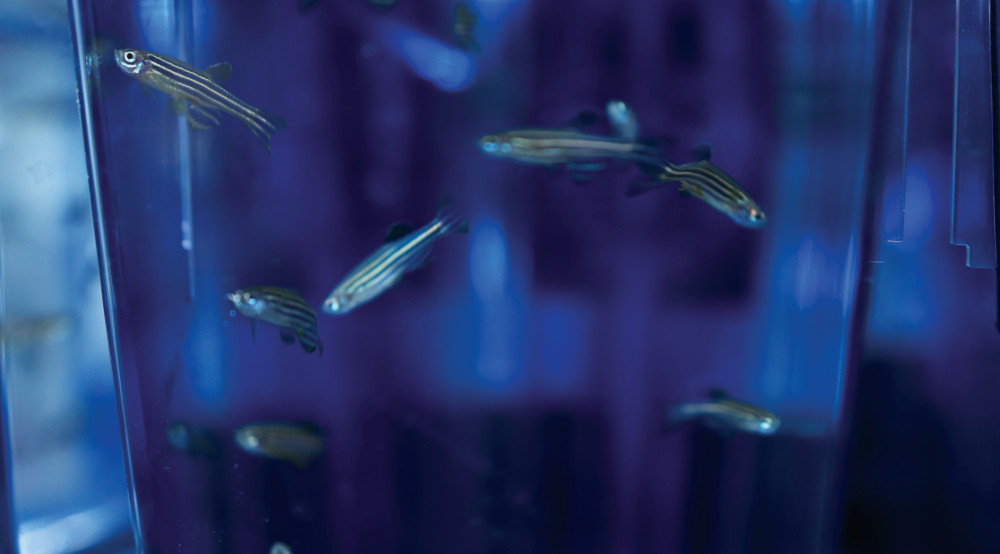
At the official opening in November of a facility on the Bannatyne campus, scientists showed off tiny lab animals with surprising potential for biomedical research: tropical fish.
The $2.5-million Rady Biomedical Fish Facility is outfitted with leading-edge equipment for studying two freshwater species: zebrafish and Mexican tetra fish.
These species’ fascinating qualities include their capacity to regenerate body parts if they’re injured, as well as their ability to regrow teeth. For researchers, better understanding of these processes could hold keys to advancing regenerative medicine and dentistry in humans.
The facility in the basement of the Chown Building currently houses about 2,000 zebrafish and 250 Mexican tetras. The fish tanks are stored in a multi-rack holding system that automatically maintains every aspect of water quality.
“We are honoured to be part of this world-class research facility,” said Jennifer Cleary, CEO of Research Manitoba, which contributed to funding the new equipment.
The Rady Biomedical Fish Facility is co-led by Dr. Devi Atukorallaya, associate professor of oral biology in the Dr. Gerald Niznick College of Dentistry, and Dr. Benjamin Lindsey, assistant professor of human anatomy and cell science in the Max Rady College of Medicine.
“We now have the most advanced facility for small laboratory fish on the Prairies, in terms of equipment and technologies,” Lindsey said.
“We encourage other Manitoba scientists to learn about the potential of these animals for health research and collaboration. One advantage is that fish are more cost-effective for research than small mammals, such as mice.”
“The developmental genetic pathways in these fish are remarkably similar to those in humans,” Atukorallaya noted. “About 70 per cent of the genes are the same as human genes.”
Atukorallaya is the only scientist in Canada using the Mexican tetra species for biomedical research. She conducts experiments with both Mexican tetra and zebrafish to gain insight into skull and facial development in human embryos.
“The fish embryos are transparent, so under the microscope I can study how the bones, teeth, organs and sensory systems develop. This helps us to understand human congenital malformations, such as cleft palate.”
Atukorallaya has several research projects underway. In one, she has been the first in the world to expose fish eggs to alcohol in order to study abnormalities of tooth and tastebud development that correspond to fetal alcohol spectrum disorder in humans.
Zebrafish are used worldwide in biomedical research, Lindsey said. They can serve as a model for many human diseases, including cancer, diabetes and heart disease.
Lindsey is one of a handful of Canadian researchers using zebrafish to study brain and spinal cord injury. His focus is on the species’ extraordinary ability to self-repair.
“The neural stem cells in zebrafish are very good at regenerating tissue after trauma. If we can discover how they do this, it could one day lead to treatments for humans with brain injuries or neurodegenerative diseases, such as Parkinson’s.”
The Rady Faculty of Health Sciences invested about $1.5 million into renovating the facility space. The equipment was funded by joint grants received by Atukorallaya and Lindsey from the Canada Foundation for Innovation John R. Evans Leaders Fund and Research Manitoba ($843,000) and the Natural Sciences and Engineering Research Council ($90,000).
BY ALISON MAYES
